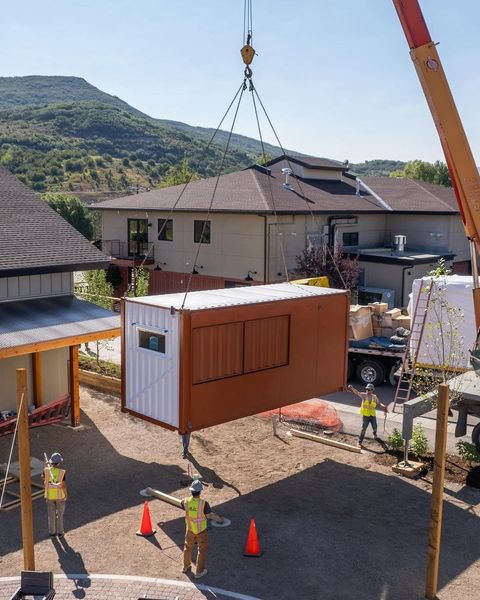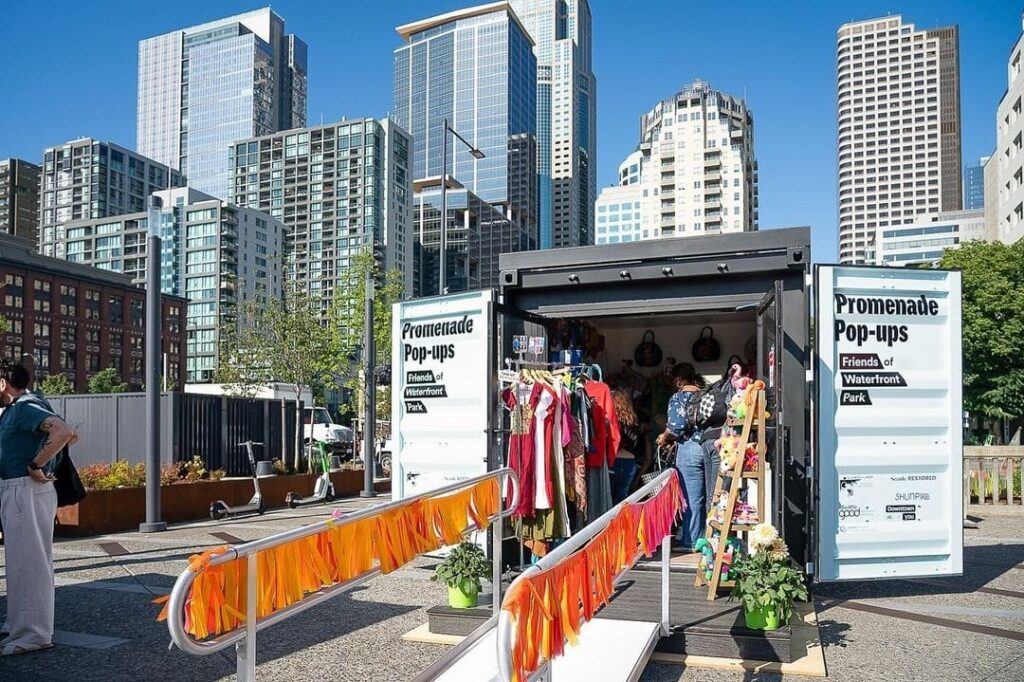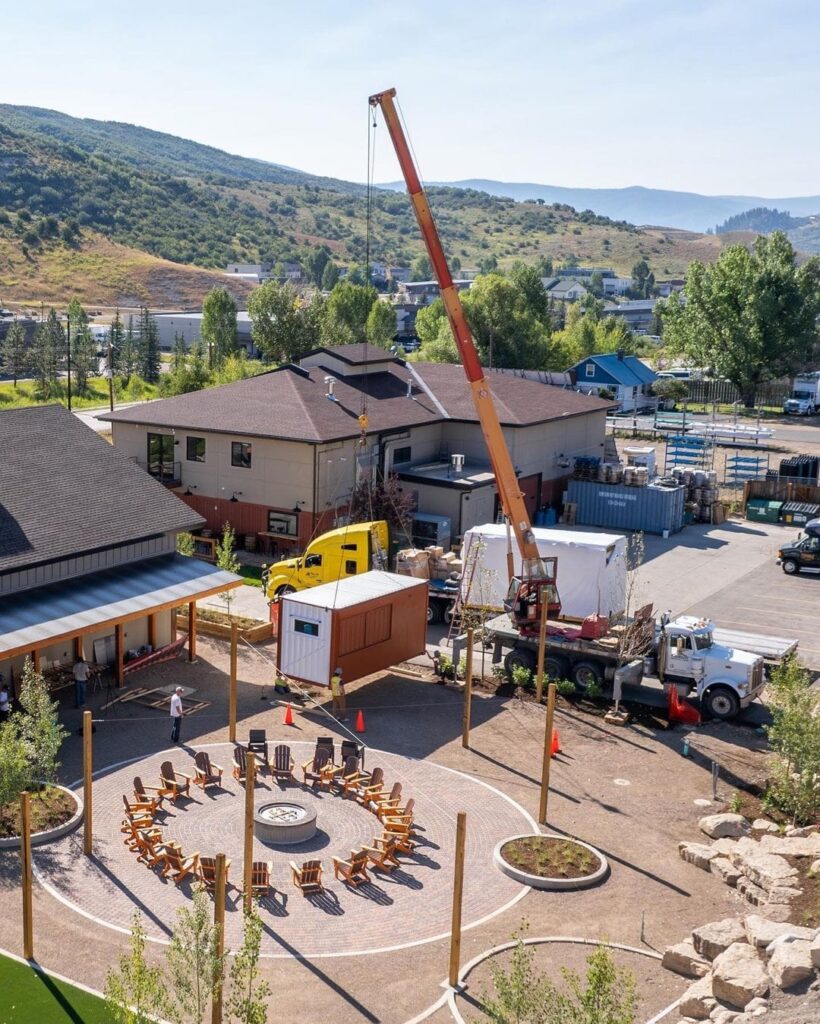Building a dream home is a goal for many, and today, more people are turning to an innovative, eco-friendly solution: shipping container homes. These homes offer a unique blend of modern design and sustainability, all while being cost-effective. In this article, we will explore everything you need to know about building your dream home with shipping containers. From understanding what shipping container homes are to diving deep into the benefits, design considerations, building process, and cost factors, this comprehensive guide aims to provide you with all the necessary information to make an informed decision.
What Are Shipping Container Homes?
Shipping container homes are residences built from recycled freight containers. These containers are made of durable steel, making them an excellent choice for creating sturdy and long-lasting homes. The concept of using shipping containers for housing started as a niche trend but has rapidly gained popularity due to its affordability, versatility, and environmental benefits. Initially, these homes were seen in off-the-grid communities and experimental architecture projects, but today, they have entered the mainstream, offering a viable option for sustainable living.
In addition to their durability, shipping containers are resistant to harsh weather conditions, pests, and even natural disasters like earthquakes. This robustness makes them an appealing choice for homeowners looking for a secure and resilient dwelling. Furthermore, the modular nature of shipping containers allows for endless design possibilities, enabling architects and builders to create everything from compact tiny homes to sprawling multi-container residences.

Benefits of Shipping Container Homes
Affordability
One of the most significant advantages of shipping container homes is their affordability. The cost of a 20-foot shipping container can be relatively low compared to traditional building materials. Prefabricated shipping container homes can be more budget-friendly, allowing you to achieve your dream home without breaking the bank. Moreover, the simplified construction process often results in lower labor costs, making the overall project more economical.
In addition to the initial savings, shipping container homes offer long-term financial benefits. Their energy-efficient design can significantly reduce utility bills, and their low maintenance requirements mean fewer expenses over time. Many homeowners also find that these homes appreciate in value, offering a good return on investment.
Sustainability
Shipping container homes are an eco-friendly alternative to traditional housing. By repurposing unused shipping containers, you reduce waste and promote recycling. Additionally, these homes often require fewer building materials, which further reduces the environmental impact. The steel used in shipping containers is also highly recyclable, adding another layer of sustainability to your home.
Many container homes incorporate additional green technologies such as solar panels, rainwater harvesting systems, and energy-efficient appliances. These features not only make the home more sustainable but also contribute to a smaller carbon footprint. Living in a shipping container home allows you to embrace a lifestyle that is both eco-conscious and resource-efficient.
Versatility
Shipping containers are highly versatile and can be modified to fit various designs and layouts. Whether you want a compact tiny home or a spacious multi-bedroom house, containers can be adapted to meet your needs. Modular shipping container homes can be easily expanded or reconfigured, offering flexibility as your family grows or your needs change. This adaptability makes them suitable for a wide range of applications, from residential homes to commercial spaces.
Furthermore, the design possibilities are virtually limitless. You can stack containers, place them side by side, or even angle them to create unique architectural features. Interior customization options are equally diverse, allowing you to create a living space that perfectly matches your personal style and functional requirements.
Designing Your Shipping Container Home
Choosing the Right Layout
When designing your shipping container home, the first step is choosing the right layout. Consider the number of bedrooms, bathrooms, and living spaces you need. For example, a 2-bedroom container home might be ideal for a small family, while a 3-bedroom container house offers more space for larger families. Think about how you will use each space and plan accordingly to ensure a functional and comfortable living environment.
In addition to the basic layout, consider incorporating open spaces and natural light to make the home feel more spacious. Large windows and sliding doors can create a seamless connection between indoor and outdoor areas, enhancing the overall living experience. You might also want to include multi-purpose rooms that can adapt to different needs over time.
Customization Options
Shipping container homes can be customized to reflect your personal style. From modern metal container homes to rustic prefab shipping container cabins, the design possibilities are endless. You can work with custom builders to create a unique home that suits your tastes and requirements. Customization options include everything from the exterior finish and color scheme to the interior layout and fixtures.
Moreover, you can incorporate various architectural elements such as rooftop gardens, balconies, and patios to enhance the aesthetic appeal and functionality of your home. Interior design choices like flooring, cabinetry, and lighting can further personalize your space, making it truly your own.
Insulation and Ventilation
Proper insulation and ventilation are crucial for making your container home comfortable. Containers are made of steel, which can get very hot or cold depending on the weather. High-quality insulation will help regulate the temperature inside your home, while good ventilation ensures fresh air circulation. Various insulation materials are available, including spray foam, fiberglass, and rigid foam, each offering different benefits.
Additionally, consider installing energy-efficient windows and doors to improve thermal performance. Ventilation systems such as exhaust fans, air vents, and even green roofs can help maintain a healthy indoor environment. By prioritizing insulation and ventilation, you can create a comfortable living space that is both energy-efficient and cost-effective.
Building Process

Finding a Reliable Builder
The first step in building your shipping container home is finding a reliable builder. Look for experienced container home builders in your area. For instance, if you are in South Carolina, search for “container home builders South Carolina” to find local experts who can help bring your vision to life. Check their credentials, ask for references, and review their previous projects to ensure they have the expertise required for your specific needs.
It is also beneficial to work with a builder who is knowledgeable about local building codes and regulations. This ensures that your project complies with all legal requirements, avoiding potential delays and complications. A good builder will also provide valuable insights and recommendations to optimize your design and construction process.
Site Preparation
Once you have chosen a builder, the next step is site preparation. This includes clearing the land, laying a foundation, and ensuring proper drainage. The foundation is essential for stability and can vary depending on your location and the size of your home. Options include concrete slabs, piers, and even helical piles for more challenging terrains.
In addition to the foundation, consider other site-specific factors such as access to utilities, zoning restrictions, and environmental impact. Proper site preparation sets the stage for a smooth construction process and ensures the long-term stability of your home. Collaborate closely with your builder to address any potential issues early on.
Assembling the Containers
After the site is prepared, the containers are delivered and assembled. This process involves cutting and welding the containers to create doors, windows, and rooms. Prefabricated shipping container homes may arrive partially assembled, reducing the construction time. Depending on the complexity of your design, the assembly phase can be completed relatively quickly compared to traditional construction methods.
During assembly, it is crucial to ensure structural integrity and proper alignment of the containers. This may involve reinforcing the steel structure, adding support beams, and sealing joints to prevent leaks. Careful attention to detail during this phase ensures a safe and durable final product.
Interior and Exterior Finishing
The final step is finishing the interior and exterior of your home. This includes installing insulation, drywall, flooring, and fixtures. Exterior finishes can range from painting to adding siding or cladding for a more traditional look. Custom containers can be designed with various finishes to match your desired aesthetic.
Interior finishing also involves plumbing, electrical work, and installing appliances. Choose materials and finishes that complement your design and meet your functional needs. Exterior landscaping and additional features such as decks, pergolas, and garden spaces can further enhance the appeal and usability of your home.
Cost Considerations
Initial Costs
The initial cost of building a shipping container home includes purchasing the containers, site preparation, and assembly. The price of shipping containers varies, but you can expect to pay a few thousand dollars for a 20ft container. The total cost will depend on the size and complexity of your design. Additional expenses may include permits, inspections, and professional fees for architects and engineers.
While the initial investment might seem significant, it is often lower than that of traditional homes. By carefully planning your budget and making informed choices, you can keep costs manageable without compromising on quality. Consider exploring financing options and grants available for sustainable housing projects to further reduce your financial burden.

Long-term Savings
While the initial cost might seem high, shipping container homes offer long-term savings. They are energy-efficient, reducing heating and cooling costs. Additionally, their durability means lower maintenance expenses over time. The steel structure is resistant to pests, mold, and fire, which can significantly reduce repair and replacement costs.
yourMoreover, many shipping container homes qualify for green building certifications and incentives, providing additional financial benefits. By investing in quality materials and energy-efficient systems, you can maximize the long-term savings and enjoy a comfortable, cost-effective living environment.
Popular Shipping Container Home Designs
Tiny Homes
Tiny homes made from shipping containers are perfect for those looking to downsize and live a minimalist lifestyle. These compact homes are affordable and can be easily transported, making them ideal for people who love to travel. Despite their small size, they can be designed to include all essential amenities, offering a cozy and efficient living space.
In addition to their portability, tiny container homes are often quicker to build and easier to maintain. They offer a simple, clutter-free lifestyle that appeals to a growing number of people seeking to reduce their environmental footprint and live more sustainably.
Guest Houses
Shipping container guest houses are a great addition to any property. They provide extra space for visitors without the need for extensive construction. A shipping container guest house can be customized to include all the amenities your guests might need, such as a kitchenette, bathroom, and comfortable sleeping area.
These guest houses can also serve multiple purposes, such as home offices, studios, or rental units, providing additional income opportunities. Their compact design and quick construction make them a practical and attractive option for expanding your living space.
Multi-bedroom Homes
For larger families, multi-bedroom shipping container homes offer plenty of space. Designs can range from simple 2-bedroom container homes to more complex 3-bedroom container houses. These homes can be expanded by adding more containers, providing flexibility for future growth.
The modular nature of shipping containers allows for creative and functional layouts that cater to the needs of larger households. You can incorporate multiple living areas, bathrooms, and even outdoor spaces to create a comfortable and spacious family home.
Conclusion
Building your dream home with shipping containers is an exciting and innovative option. With benefits like affordability, sustainability, and versatility, it’s no wonder that more people are choosing this modern housing solution. Whether you’re looking for a tiny home, a guest house, or a spacious family residence, shipping container homes offer endless possibilities for creating a unique and comfortable living space. Start your journey today by exploring options for shipping container homes for sale near you and connecting with custom builders to bring your vision to life.
Additional Resources
For more information on shipping container homes, check out the following resources:
